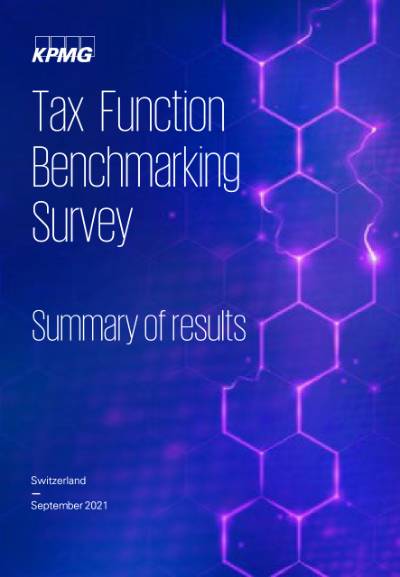Nach der Pandemie haben beispiellose wirtschaftliche Herausforderungen die Unternehmen gezwungen, Ihre Geschäftsabläufe zu überdenken. Die Steuern sind dabei keine Ausnahme: Ihre Pflichten als Steuerzahler zu erfüllen, ist im heutigen hochkomplexen Umfeld keine leichte Aufgabe. Die rasante Globalisierung, lokale Steuergesetze und neue globale Compliance-Reporting-Anforderungen wie BEPS Pillar 2: Das alles erhöht die Belastung der Steuer- und Finanzabteilungen.
Gleichzeitig führen der digitale Wandel und die digitale Innovation zu neuen Geschäftsmodellen und Unternehmen setzen in ihren Steuer- und Finanzabteilungen auf KI-gestützte, datengetriebene Lösungen.
Wie können wir helfen?
Von Ihrer Steuerabteilung wird erwartet, dass sie umfassender berichtet und die Vorschriften besser einhält - und all das mit weniger Mitteln.
Dieser Herausforderung stellen wir uns. Wir suchen nach Möglichkeiten, Kosten zu senken, Risiken zu mindern, die Qualität zu verbessern und den strategischen Wert Ihres Unternehmens zu steigern. Diesen ganzheitlichen, technologiegestützten Ansatz nennen wir „Tax Reimagined“.
Dieser neue Rahmen vereint Technologie-, Transformations- und Compliance-Funktionen. Damit unterstützen wir Unternehmen bei der beschleunigten Entwicklung und Umsetzung eines massgeschneiderten Zielbetriebsmodells für ihre Steuer- und Finanzabteilungen.
Bei Tax Reimagined geht es mit anderen Worten darum, Ihre Steuerabteilung in den entscheidenden Bereichen Strategie, Performance, Sourcing und Operations zu optimieren.
Ihre Vorteile
Tax Reimagined soll Sie dabei unterstützen, Ihre Steuerabteilung für das digitale Zeitalter fit zu machen. Wir begleiten Sie bei jedem Schritt des Prozesses, von der Ermittlung von Verbesserungspotenzialen bis zur Umsetzung neuer Technologien und Verfahren. Gemeinsam entwickeln wir eine konkrete Roadmap bis zu Ihrem Ziel. Dieser Fahrplan bietet Ihnen:
- Klarheit über Kosten und Budget
- Verbesserte Qualität der Steuerdaten
- Sicherheit bei der Steuerprüfung
- Gewissheit, dass alle Steuerschulden pünktlich beglichen werden
Durch eine verbesserte Governance und Transparenz im Steuerbereich können Sie potenzielle Steuer- und Reputationsrisiken minimieren und steuern. Und da Rollen und Verantwortlichkeiten klar definiert sind, verbessern sich die Beziehungen zum Geschäftsbetrieb und die Ergebnisse für das gesamte Unternehmen.
Tax Reimagined Framework

Strategie
Das ideale Betriebsmodell Ihrer Steuerabteilung hängt von den besonderen Bedürfnissen Ihres Unternehmens ab. Dazu zählen Ihre Risiken, Ihr allgemeines Geschäftsmodell sowie etwaige Transformationsinitiativen – es gibt keine Pauschallösung:
- Discovery-Workshops zur Erstellung Ihrer künftigen Tax -Roadmap
- Reifegradermittlung („Tax Maturity Assessment“), um Lücken und Verbesserungsmöglichkeiten zu ermitteln
- Unterstützung bei der Entwicklung eines Konzepts für Ihr angestrebtes Betriebsmodell
- Überprüfung Ihrer Steuerstrategie, einschliesslich Tax Governance. Daraus leiten wir massgeschneiderte Empfehlungen und Beobachtungen ab.

Sourcing
Der Geschäftsbereich Steuern soll mit immer weniger Mitteln immer mehr erreichen. Wenn die Ressourcen knapp sind, kann Sourcing ein wichtiger Erfolgsfaktor sein. Für die richtigen Aufgaben mit den richtigen externen Partnern zusammenzuarbeiten, kann Ihnen dabei helfen, die Kosten für die weltweite Einhaltung von Steuervorschriften zu senken, die Transparenz zu verbessern und Risiken zu verringern. Wir helfen Ihnen, das Beste aus Ihrem Sourcing-Modell herauszuholen:
- Wir entwickeln Ihr angestrebtes Betriebsmodell, indem wir die Frage berücksichtigen, wo Sie in Outsourcing, Co-Sourcing oder interne Lösungen investieren sollten.
- Globale Compliance-Management-Dienstleistungen für:
- Direkte Steuern wie Einkommenssteuer für Unternehmen oder Quellensteuer
- Indirekte Steuern wie MwSt.
- Verrechnungspreise
- Steuerberichterstattung
- Statutarische Abschlüsse, Buchhaltung und Lohnbuchhaltung
- Sekretariatsdienstleistungen für Unternehmen
- Steuerprüfungen

Operations
In jeder Phase des Steuerzyklus gibt es Spielraum für Optimierungen, sei es bei der Einreichung von Steuererklärungen oder bei der Übermittlung von Steuerberichten zum Jahresende. Die Dokumentierung der Geschäftsabläufe und Kontrollen der Steuerabteilung ist eine wichtige Aufgabe, die zunehmend durch digitale Technologien unterstützt wird. Fragen Sie uns nach:
- Optionen, um Steuerprozesse und -kontrollen zu dokumentieren
- der Auswahl von Anbietern und der Implementierung von Steuertechnologien (z. B. Compliance-Management-System oder Rahmenwerke für die Steuerkontrolle)
- Workload Assessments zur Ermittlung von Verbesserungspotenzialen
- der Bewertung des steuerlichen Reifegrads, um zu sehen, wo Sie stehen und wo Sie hinwollen
- der Digitalisierung der direkten und indirekten Steuerprozesse
- einem Tax-Governance-Modell

Performance
Die Performance Ihrer Steuerabteilung wirkt sich direkt auf Ihre Unternehmensergebnisse aus. Mit einem Balanced-Scorecard-Ansatz für das KPI-Management lassen sich die Qualität, Genauigkeit und Effizienz von Informationen und Daten verbessern. So können Ihr Steuerteam und die Unternehmensleitung fundiertere Entscheidungen treffen, effizient mit internen Kundinnen und Kunden zusammenarbeiten und transparent mit Beteiligten wie Steuerbehörden kommunizieren. Unter anderem bieten wir folgende Dienstleistungen:
- Entwicklung eines Kommunikationskonzepts für Stakeholder
- Erstellung eines KPI-Konzepts und -Rahmenwerks
- Benchmarking, damit Sie wissen, wie Ihre Funktion im Vergleich zu anderen abschneidet
Kontaktieren Sie unsere Expertinnen und Experten
Bei Fragen zu unseren Leistungen nehmen Sie bitte Kontakt mit uns auf. So können wir gemeinsam erörtern, wie wir Sie bestmöglich unterstützen können.



